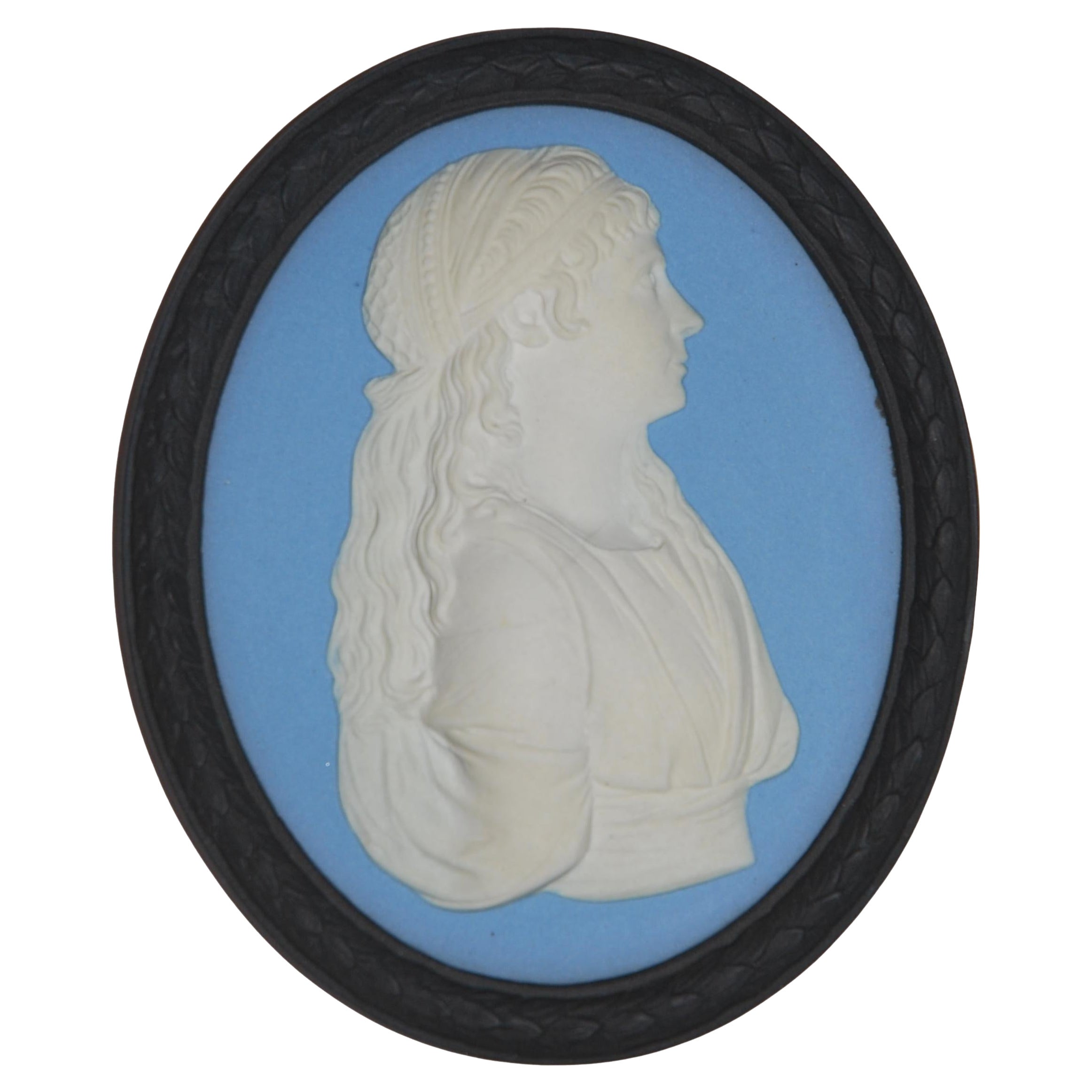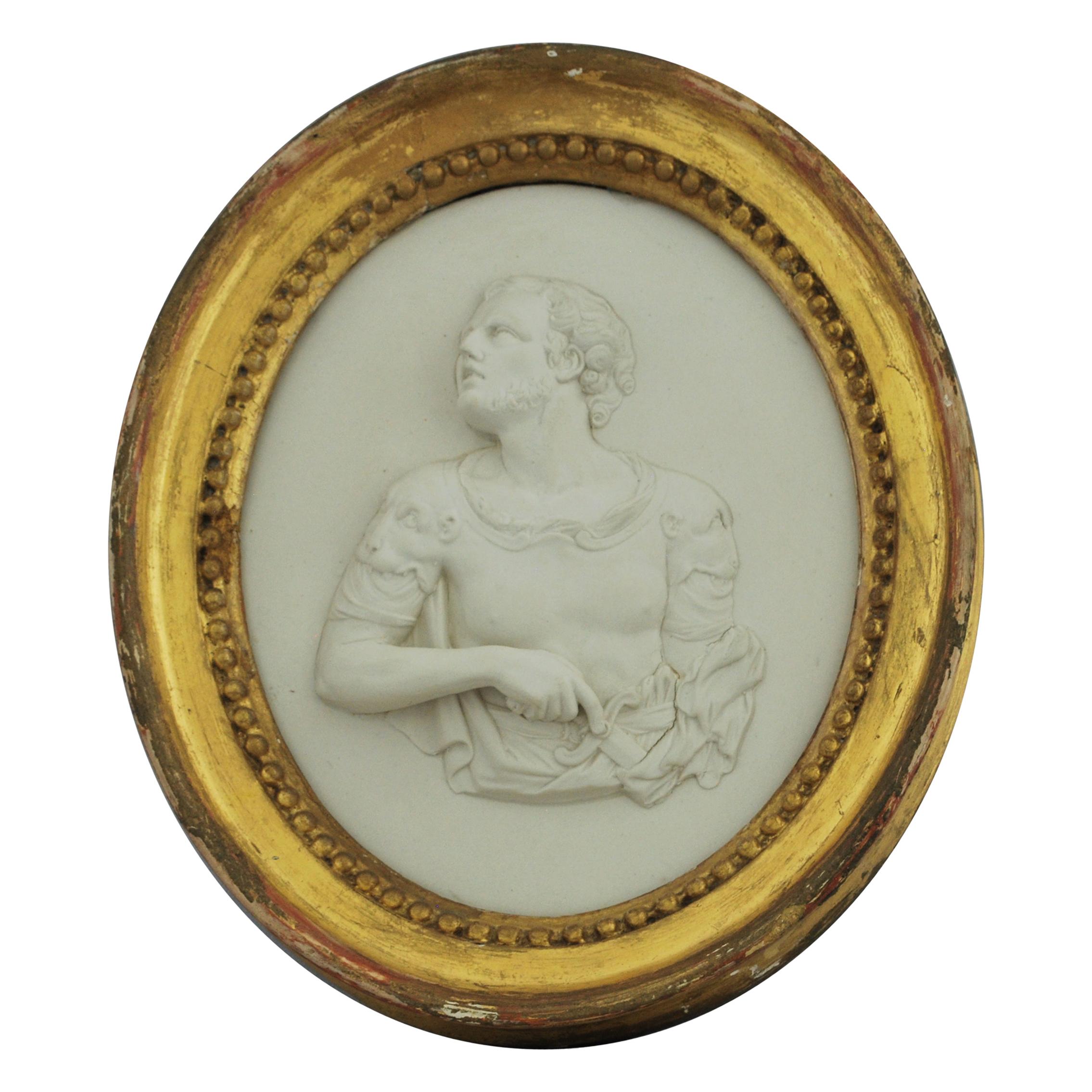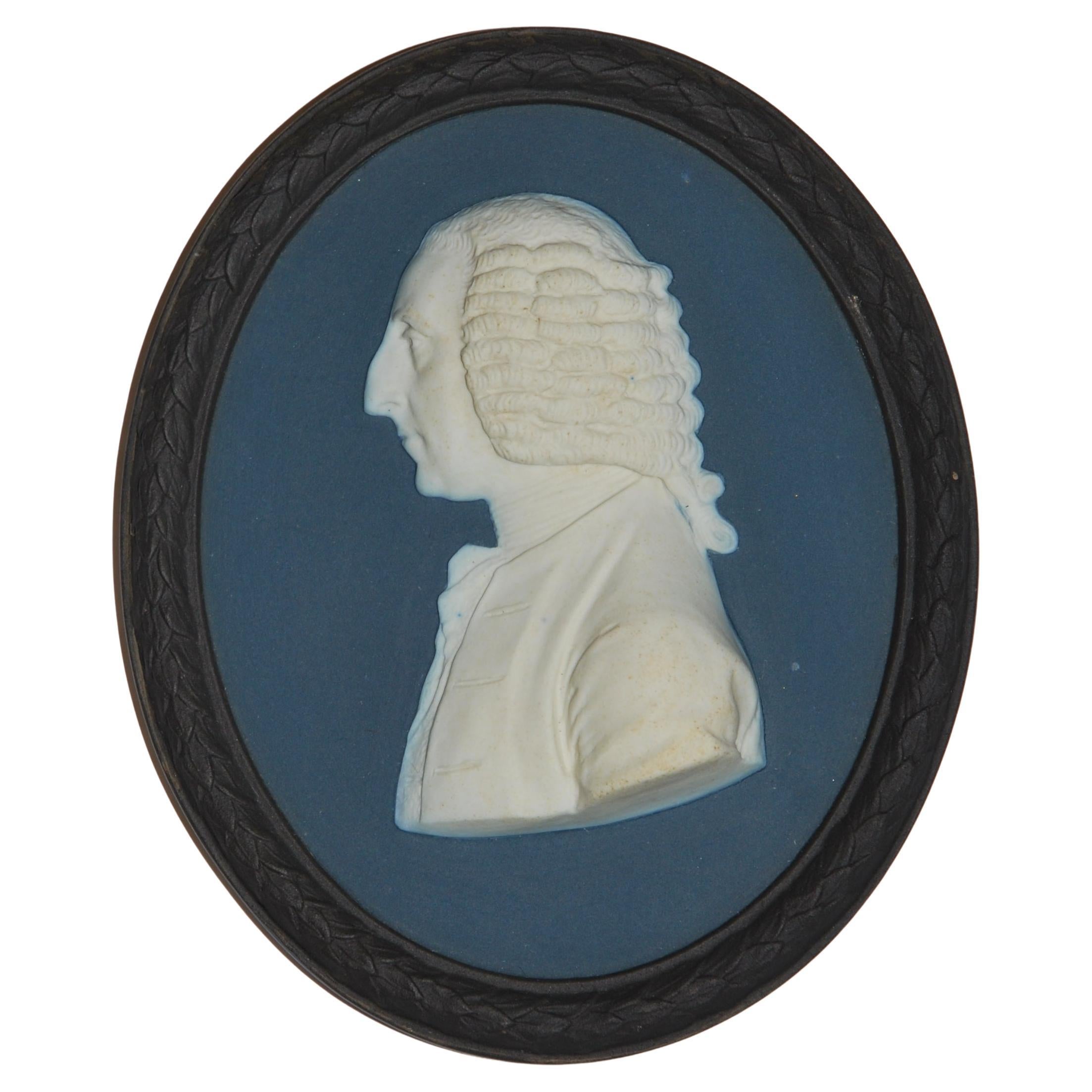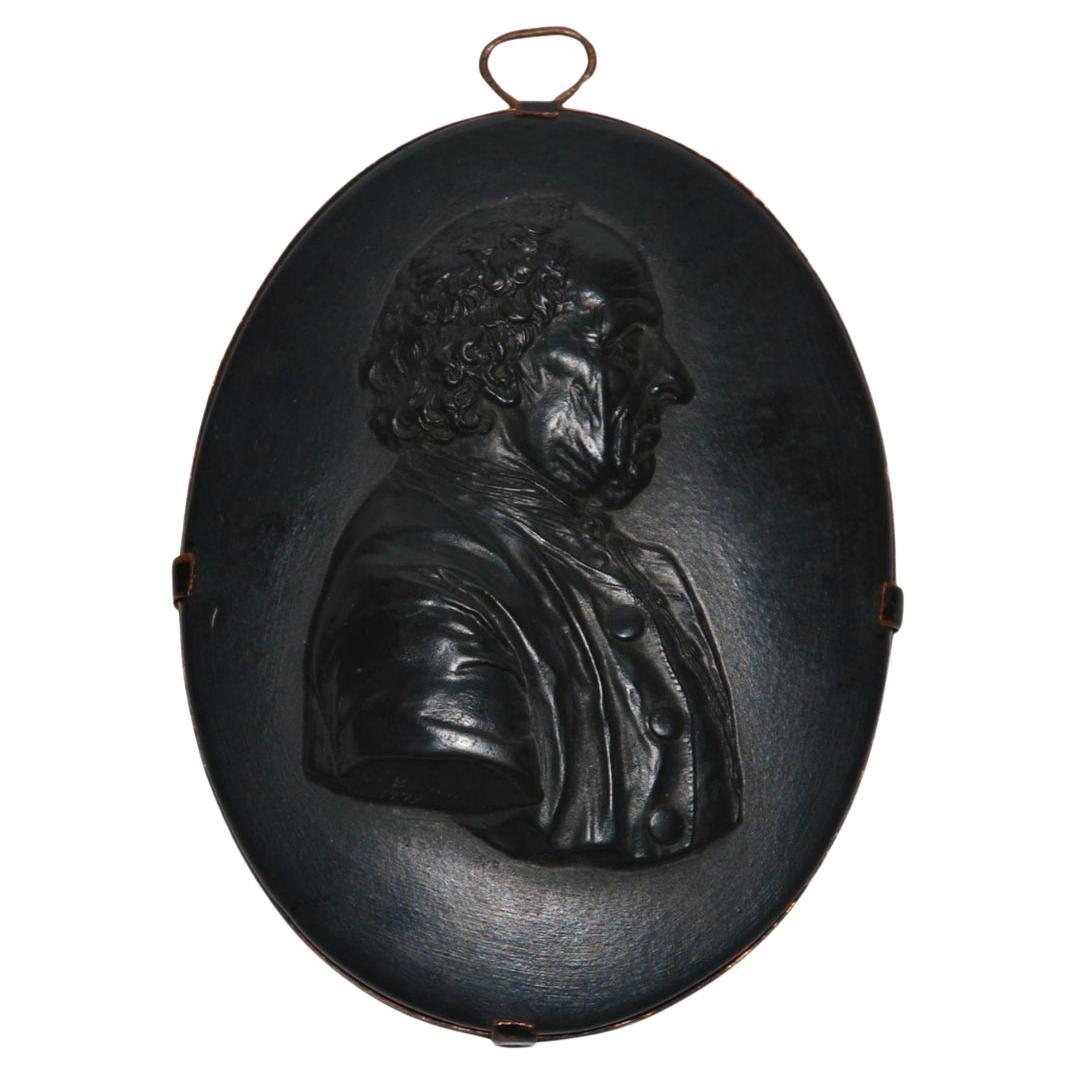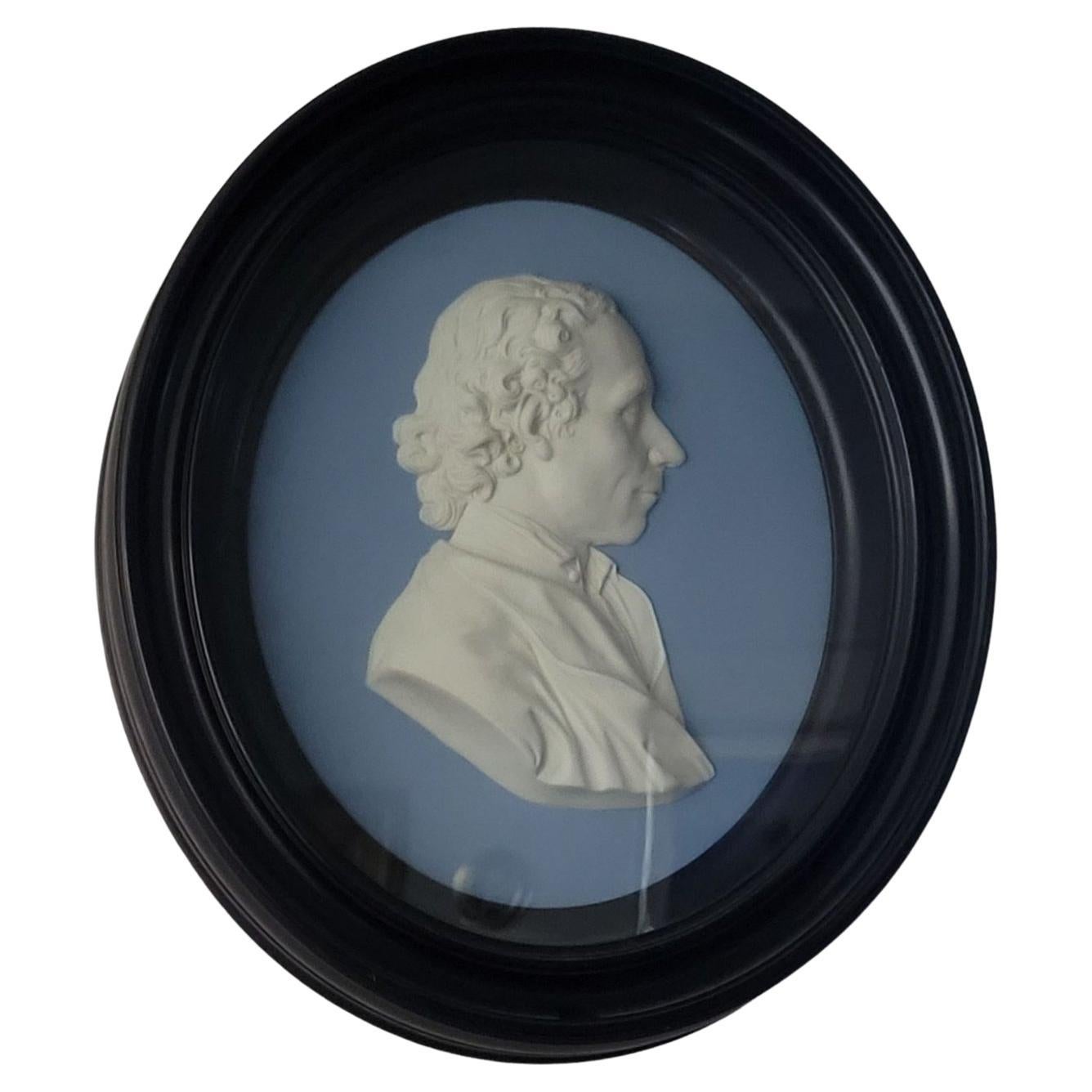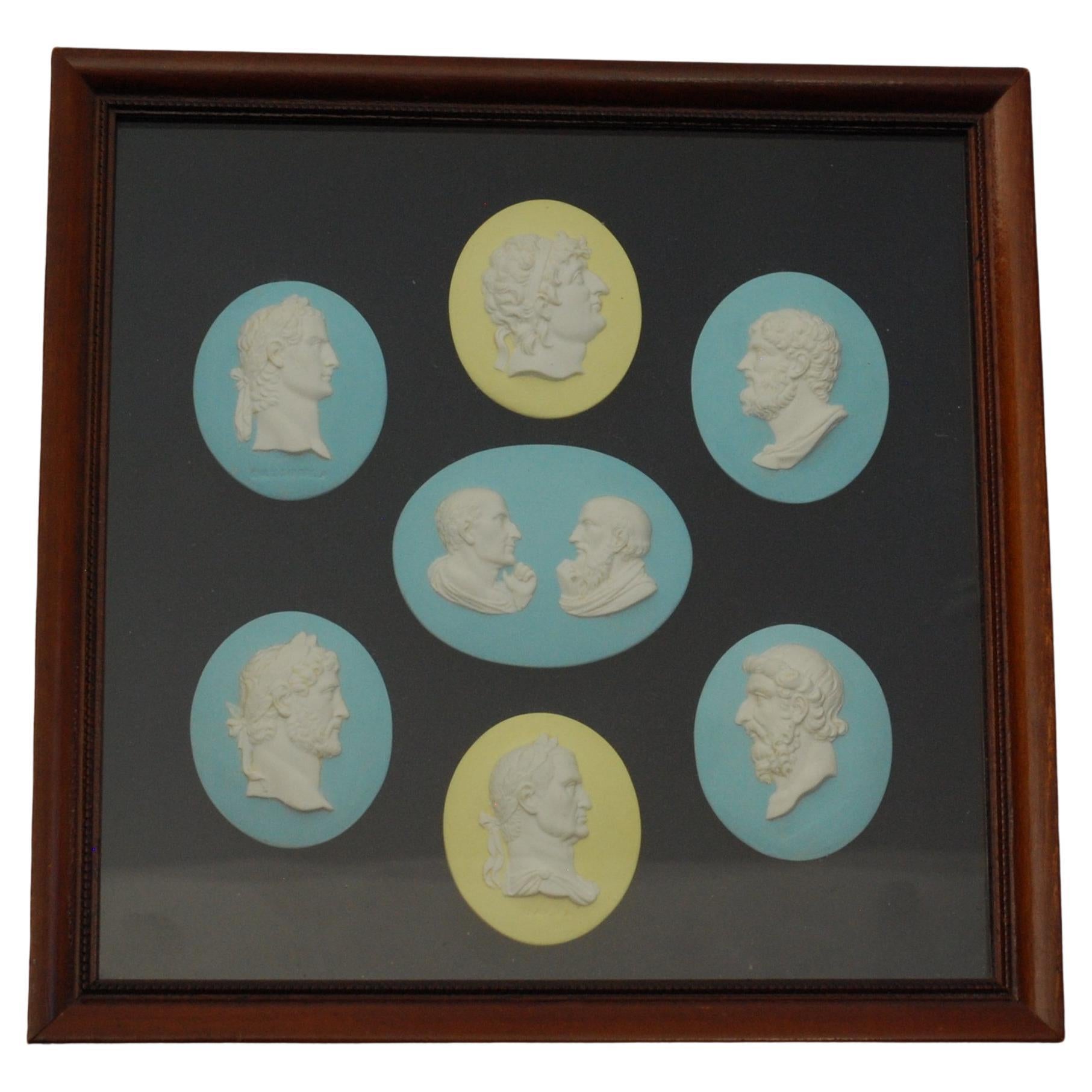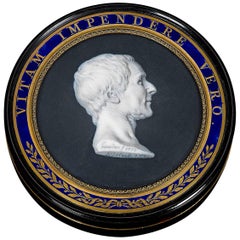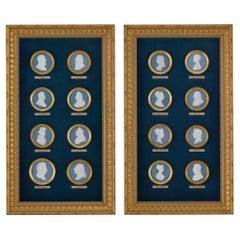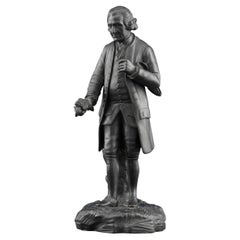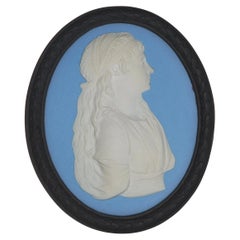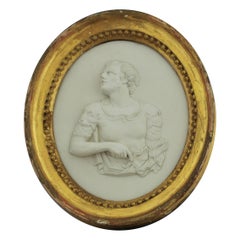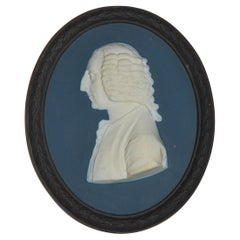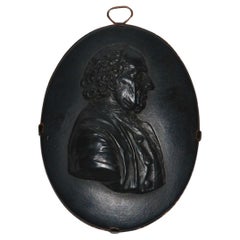Items Similar to Wedgwood & Bentley Jasperware Portrait Medallion Of Rousseau
Want more images or videos?
Request additional images or videos from the seller
1 of 5
Wedgwood & Bentley Jasperware Portrait Medallion Of Rousseau
$3,450
£2,619.67
€2,995.78
CA$4,820.15
A$5,361.06
CHF 2,799.38
MX$65,238.39
NOK 35,752.34
SEK 33,529.38
DKK 22,358.69
Shipping
Retrieving quote...The 1stDibs Promise:
Authenticity Guarantee,
Money-Back Guarantee,
24-Hour Cancellation
About the Item
This exceptional blue and white jasperware plaque by Wedgwood & Bentley depicts Genevan writer, philosopher and composer Jean-Jacques Rousseau. Some of Wedgwood's most meticulous work was executed in cameos and medallions, often featuring royalty and celebrated personages as subjects. The invention of the jasper body circa 1775 enabled Wedgwood to produce white cameo reliefs on a colored ground in beautiful combinations. Embodying classical beauty and simplicity, jasper medallions are among Wedgwood's most sought-after wares.
Stamped "Wedgwood & Bentley" on the reverse
Circa 1775
1 3/4" wide x 2 1/8" high
Literature:
Robin Reilly and George Savage, Wedgwood: the Portrait Medallions, 1972, illus. p. 293
- Creator:Wedgwood & Bentley (Maker)
- Dimensions:Height: 2.13 in (5.42 cm)Width: 1.75 in (4.45 cm)Depth: 0.25 in (6.35 mm)
- Style:Other (In the Style Of)
- Materials and Techniques:
- Place of Origin:
- Period:
- Date of Manufacture:Circa 1775
- Condition:
- Seller Location:New Orleans, LA
- Reference Number:Seller: 31-42641stDibs: LU891137472732
About the Seller
5.0
Recognized Seller
These prestigious sellers are industry leaders and represent the highest echelon for item quality and design.
Established in 1912
1stDibs seller since 2010
109 sales on 1stDibs
Typical response time: 4 hours
- ShippingRetrieving quote...Shipping from: New Orleans, LA
- Return Policy
Authenticity Guarantee
In the unlikely event there’s an issue with an item’s authenticity, contact us within 1 year for a full refund. DetailsMoney-Back Guarantee
If your item is not as described, is damaged in transit, or does not arrive, contact us within 7 days for a full refund. Details24-Hour Cancellation
You have a 24-hour grace period in which to reconsider your purchase, with no questions asked.Vetted Professional Sellers
Our world-class sellers must adhere to strict standards for service and quality, maintaining the integrity of our listings.Price-Match Guarantee
If you find that a seller listed the same item for a lower price elsewhere, we’ll match it.Trusted Global Delivery
Our best-in-class carrier network provides specialized shipping options worldwide, including custom delivery.More From This Seller
View AllMontesquieu Portrait Tortoiseshell Snuff Box
By Jacques Joseph de Gault
Located in New Orleans, LA
An exquisite miniature of French philosopher Charles Montesquieu graces the lid of this tortoiseshell-lined snuff box. The handsome portrait was fash...
Category
Antique 18th Century French Louis XV Snuff Boxes and Tobacco Boxes
Materials
Gold, Enamel
Sèvres Rulers of France Portrait Medallions
By Manufacture Nationale de Sèvres
Located in New Orleans, LA
This exceptionally rare set of sixteen Sèvres portrait medallions captures the illustrious history of one of the world’s most powerful monarchies—the French Crown. Exquisitely crafte...
Category
Antique Early 19th Century French Decorative Art
Materials
Porcelain
Wedgwood Black Basalt Figure of Rousseau
By Wedgwood
Located in New Orleans, LA
One of history’s greatest thinkers, Jean-Jacques Rousseau, is the subject of this black basalt figure by Wedgwood. The individual features and personality of the celebrated philosoph...
Category
Antique 19th Century English Figurative Sculptures
Materials
Ceramic, Stoneware
Terracotta Bust of King Louis XV After Lemoyne
Located in New Orleans, LA
Presenting a regal yet approachable portrait of France’s Louis XV, this terracotta bust is modeled after Jean-Baptiste Lemoyne’s sculpture of the king executed in 1757, which now resides in the Metropolitan Museum of Art in New York. This version is executed in meticulous detail, with the king donning his cuirass decorated with the cross of the Holy Ghost and a draper tied under his tie. His head is turned slightly, giving the portrait a more casual, realistic feel, yet there is no mistaking his position of power in this confident portrayal.
Louis XV, also called “Louis the Beloved,” ruled as King of France from September 1, 1715 until his death in 1774, succeeding his great-grandfather Louis XIV at the age of five. Until the young Louis...
Category
Antique 19th Century Rococo Busts
Materials
Terracotta
Wedgwood Black Basalt Bust of Mercury
By John Flaxman
Located in New Orleans, LA
In this expertly rendered black basalt bust, Mercury, the fleet-footed Roman god of commerce, communication and transport, is depicted in a winged h...
Category
Antique 19th Century English Neoclassical Busts
Materials
Ceramic
Wedgwood First Edition Portland Vase
By Josiah Wedgwood
Located in New Orleans, LA
This extraordinary First Edition Wedgwood rendering of the legendary Portland Vase is one of the rarest masterpieces of Josiah Wedgwood, the most important ceramics manufacturer of the 18th century. A tour de force of ceramic art, the Portland Vase First Editions are regarded as one of the greatest ceramic accomplishments of the 18th century, and they are a testament to the superior skill of Josiah Wedgwood, his extraordinary ambition and his tireless dedication to perfection. One of the very few First Editions still in private hands, this exceptional Wedgwood Portland Vase is one of the most important works of ceramics on the market.
The story of Wedgwood and the Portland Vase is legendary. The original Portland Vase is the ancient world's most famous decorative arts masterpiece—a cameo glass vase dating to circa 25 CE with a frieze representing the myth of Peleus and Thetis, initially thought to be carved from stone. When it was first rediscovered around 1582, it captivated the world with its opaque white cameo figures over its rich blue background. After the vase was excavated it was owned by Cardinal Barberini, whose family later sold it to the Duke of Hamilton who eventually sold it to the Duchess of Portland, from whom the famed vase now takes its name.
The famed British sculptor John Flaxman was likely the first to have brought the vase to Wedgwood’s attention. In a letter dated February 5, 1784, he wrote: “I wish you may soon come to town to see William Hamilton’s vase, it is the finest production of Art that has been brought to England and seems to be the very apex of perfection to which you are endeavouring to bring your bisque and jasper…” Indeed, the Portland Vase is a masterpiece of cameo-cutting, with a stunning frieze of opaque white cameo glass over its translucent deep blue form. Its beauty and translucence would inspire Wedgwood to undertake his years-long endeavor to precisely replicate the original in porcelain.
Upon closer examination, Wedgwood realized the vase was not made of stone or earthenware, but of cameo glass—a technique so advanced it remains the masterpiece of cameo-cutting. Today, the vase is housed in the British Museum, where it is the second most viewed antiquity, only after the Rosetta Stone. It then took Wedgwood several painstaking years to craft his unparalleled copy of the vase, during which he perfected the jasperware technique that would become his crowning achievement. To this day, the renowned porcelain firm regards the vase as its most momentous triumph, so much so that the vessel’s silhouette is incorporated into the Wedgwood logo.
The four years it took Wedgwood to complete his vase were not without tribulations. From the start, Wedgwood encountered numerous problems with his copies, from cracking and blistering to the difficulty of replicating the translucent effects of the original. The first acceptable copy was produced in October 1789 and sent to Wedgwood’s physician and friend Erasmus Darwin, the grandfather of Charles Darwin. Wedgwood presented another copy to Queen Charlotte in May 1790 and afterward organized a private exhibition of the vase at the Portland House in London. The viewing proved so popular that Wedgwood was forced to restrict the show to 1,900 visitors. Much of London wished to see Wedgwood’s greatest major achievement. Perhaps the highest praise of Wedgwood’s copy came from the famed artist Sir Joshua Reynolds, the founder of the British Royal Academy: “I can venture to declare it a correct and faithful imitation, both in regard to the general effect, and the most minute detail of the part.”
Over the next few years, Wedgwood's oven records listed 43 First Edition copies of the Portland Vase produced between 1791 and 1796, 11 of which were broken during the firing process. In all, it is believed around 30 First Edition vases were completed, though an unknown number of these were somewhat damaged—one of these imperfect examples is currently held by the Victoria & Albert Museum in London. The perfect examples such as ours have found their way into the most important museum collections in the world. The British Museum (London), Art Institute of Chicago, Birmingham Museum of Art, Museum of Fine Arts (Boston) and the Fitzwilliam Museum (Cambridge, UK), among others, all hold one of these highly coveted vases in their collections.
In terms of technical achievement, the First Edition Portland Vases...
Category
Antique 18th Century English Classical Roman Vases
Materials
Porcelain
You May Also Like
Portrait Medallion of The Comtesse du Barry, Wedgwood C1920
By Wedgwood
Located in Melbourne, Victoria
Tricolour portrait medallion of the last Maîtresse-en-titre (official mistress) of Louis XV.
Produced by Bert Bentley from the 18th century model, with his usual excellent detail...
Category
Early 20th Century English Neoclassical Revival Pottery
Materials
Pottery, Stoneware
$1,280 Sale Price
20% Off
Jasperware Portrait Medallion, Marc Antony, Wedgwood, circa 1778
By Wedgwood
Located in Melbourne, Victoria
An important early portrait medallion of Marc Antony in plain white jasper, probably predating the invention of the ‘dip’ process, which is why it i...
Category
Antique Late 18th Century English Neoclassical Figurative Sculptures
Materials
Stoneware
$8,000 Sale Price
20% Off
Free Shipping
Portrait Medallion of Pitt the Elder, Wedgwood C1920
By Wedgwood
Located in Melbourne, Victoria
A fine tricolour portrait medallion of the First Earl of Chatham (1708-1778), a Whig statesman who led Britain during the Seven Years’ War.
Orna...
Category
Early 20th Century English Neoclassical Revival Pottery
Materials
Pottery, Stoneware
Basalt Portrait Medallion, Edward Bourne, Wedgwood, circa 1780
By Wedgwood
Located in Melbourne, Victoria
Portrait Medallion of Edward Bourne, bricklayer at the Wedgwood factory. A bricklayer was kept on staff in order to maintain the kilns.
This was modelled by Hackwood as an excercise...
Category
Antique Late 18th Century English Neoclassical Figurative Sculptures
Materials
Stoneware
Enormous Portrait Medallion of Dr Priestly, Bert Bentley, Wedgwood, circa 1925
By Wedgwood
Located in Melbourne, Victoria
Fabulously large and fine example of the work of the well-known decorator Bert Bentley. Very few portrait medallions of this size were made, in all the time that Wedgwood has been making portrait medallions.
Priestly's advocacy for free speech and freedom of religion...
Category
Early 20th Century English Neoclassical Revival Pottery
Materials
Stoneware
Group of seven portrait medallions, Wedgwood, circa 1780
By Wedgwood
Located in Melbourne, Victoria
Set of seven jasperware medallions, one a double portrait. Two are bright yellow, a very rare colour indeed. They show: Hadrian - Titus - Caligula Marcus Arelius &; Julius Ceasar Did...
Category
Antique Late 19th Century English Neoclassical Revival Decorative Art
Materials
Pottery
More Ways To Browse
Jasperware Plaque
18th Century Jasperware
Wedgwood Medallion
Wedgwood Jasperware Plaque
Wedgwood Portrait
Wedgwood Jasperware Medallion
Wedgwood 1972
Wedgwood Jasperware Portrait
Chinese Wedding Cabinets
Chinoiserie French Commode
Chippendale Serpentine Chest
Chronometers
Cityscape Cabinet
Cobra Snake Vintage
Counter Top Glass Display
Crown Thorns Frame
Delft Tiles 17th Century
Desk Mid Century 6 Drawers
